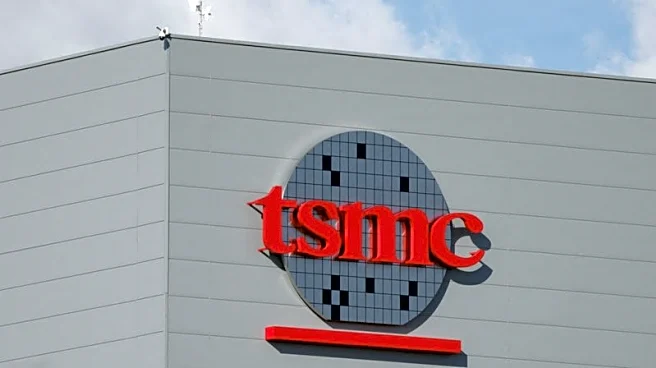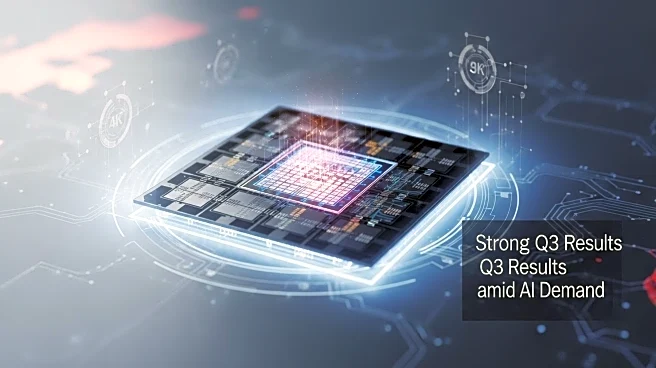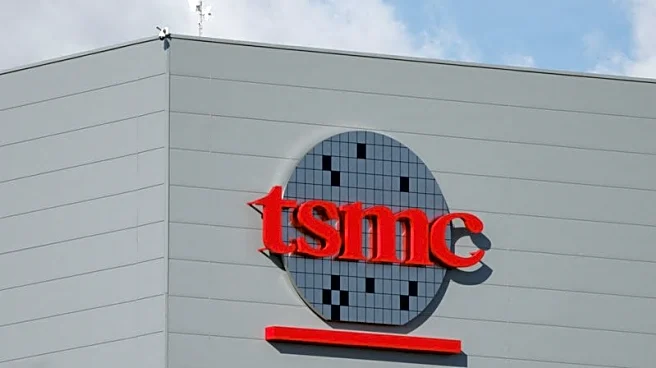What's Happening?
Taiwan Semiconductor Manufacturing Co. (TSMC) is set to release its third-quarter earnings, with analysts forecasting significant growth due to high demand for AI chips. The company, a major supplier to Nvidia
and Apple, is expected to report earnings per share of approximately $2.63 and revenue of around $31.6 billion, marking a more than 30% increase from the previous year. This growth is attributed to a sharp rise in September revenue, which increased 31% year-over-year to NT$330.98 billion (US$10.84 billion). TSMC's quarterly revenue for the July-to-September period is estimated at NT$989.98 billion (US$32.44 billion), reflecting a 30% rise from the same period last year.
Why It's Important?
The robust earnings forecast for TSMC underscores the growing influence of AI technology on the semiconductor industry. As AI applications expand, the demand for advanced chips continues to rise, benefiting companies like TSMC that are at the forefront of chip manufacturing. This trend not only boosts TSMC's financial performance but also highlights the critical role of semiconductors in driving technological advancements. The company's strong margins and pricing power further support its premium valuation, despite geopolitical and trade risks, indicating a positive outlook for stakeholders in the semiconductor market.
What's Next?
TSMC's upcoming earnings report will likely influence investor sentiment and market dynamics in the semiconductor sector. Analysts and investors will be closely monitoring the company's performance and guidance for future quarters, particularly in light of ongoing geopolitical tensions and trade uncertainties. The sustained demand for AI chips may prompt TSMC to expand its production capabilities and invest in new technologies to maintain its competitive edge.
Beyond the Headlines
The increasing reliance on AI-driven chip orders reflects broader shifts in technology adoption and innovation. As industries integrate AI into their operations, the demand for high-performance computing solutions grows, potentially leading to further advancements in semiconductor technology. This evolution may also drive changes in global supply chains and manufacturing practices, as companies seek to optimize production and meet rising demand.












